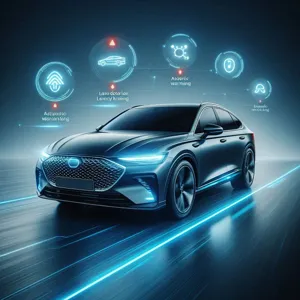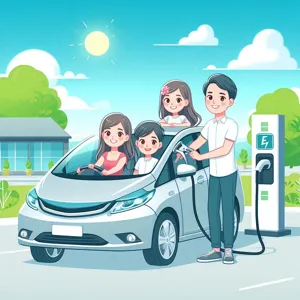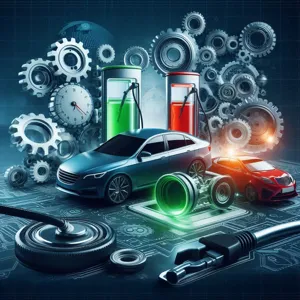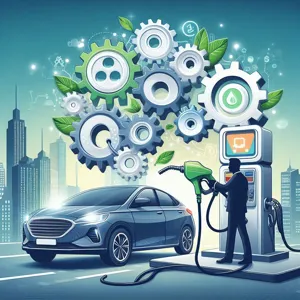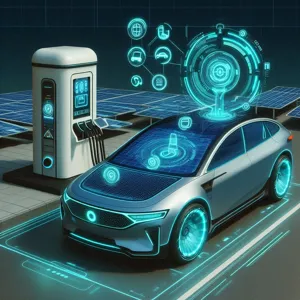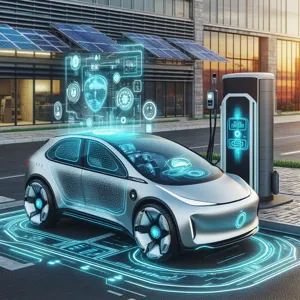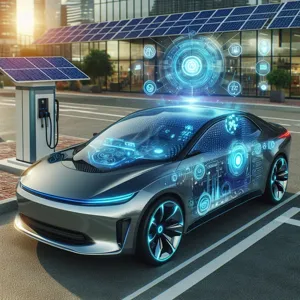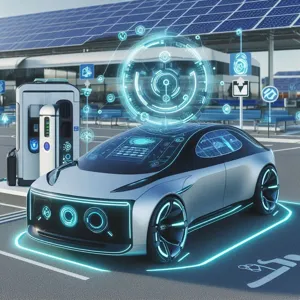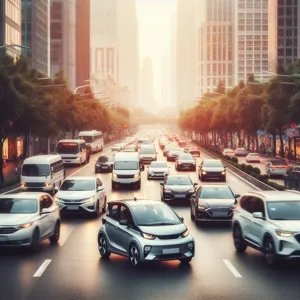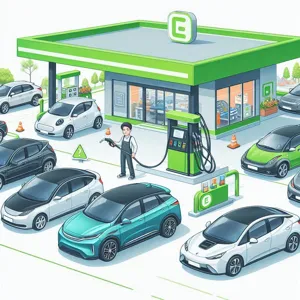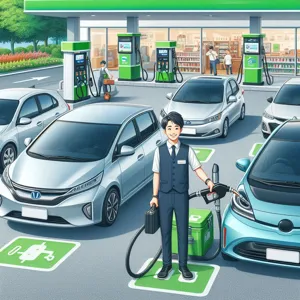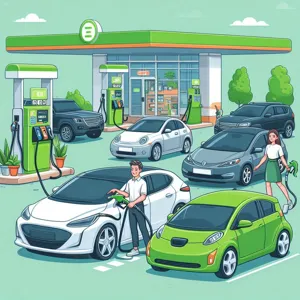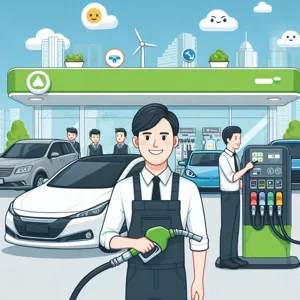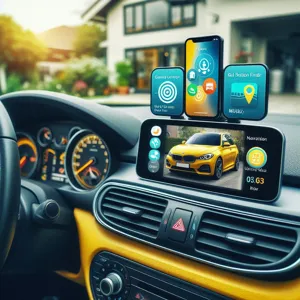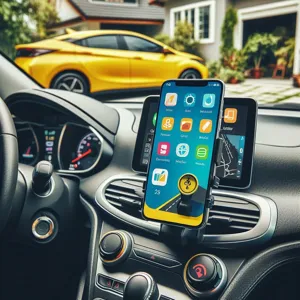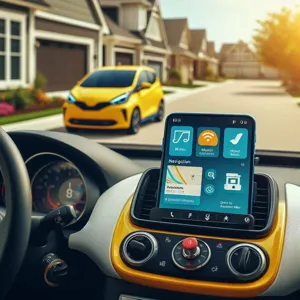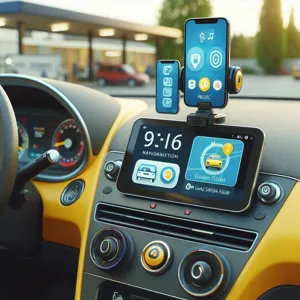In an era where road safety is more critical than ever, mastering defensive driving techniques is paramount for every driver seeking to navigate the streets with confidence and caution.
Defensive driving is about more than just obeying traffic laws; it’s a proactive approach that equips you with the skills to anticipate potential hazards, respond effectively to unpredictable situations, and ultimately safeguard yourself and others on the road. As we delve into this essential guide, we’ll explore practical tips and strategies that can transform your driving habits, from maintaining a safe following distance to understanding the importance of awareness and adaptability in various driving conditions. Whether you’re a seasoned driver or a new license holder, these invaluable insights will empower you to foster a safer driving environment, ensuring that every journey ends as safely as it begins. Get ready to buckle up and enhance your driving prowess with our essential tips for mastering defensive driving!
1. Understanding Defensive Driving: An Overview

Defensive driving is more than just a skill; it’s a mindset that transforms the way you interact with the road and other drivers. At its core, defensive driving emphasizes proactive measures, allowing you to anticipate potential hazards and make informed decisions before they escalate into dangerous situations. This approach is grounded in the belief that every driver is responsible not only for their own safety but also for the safety of others on the road.
When you engage in defensive driving, you become acutely aware of your surroundings. This includes not only the vehicles around you but also pedestrians, cyclists, and unexpected obstacles. You learn to maintain a safe following distance, enabling you to react swiftly to sudden stops or erratic behavior from other drivers. Moreover, defensive driving teaches you to adapt to changing conditions—whether it’s inclement weather, heavy traffic, or unfamiliar terrains—by adjusting your speed and driving style accordingly.
Understanding defensive driving also involves recognizing the common behaviors that lead to accidents. Tailgating, distracted driving, and aggressive maneuvers are just a few examples of risky behaviors that can be mitigated through a defensive approach. By cultivating patience and awareness, you empower yourself to navigate the roads with confidence, minimizing risks for both yourself and others.
In essence, mastering defensive driving is about embracing a culture of safety. It involves ongoing education, self-reflection, and a commitment to continuous improvement behind the wheel. By adopting these principles, you not only enhance your own driving skills but contribute to a greater collective effort towards safer roads for everyone. Whether you’re a seasoned driver or a newcomer to the road, understanding the fundamentals of defensive driving is an invaluable step towards becoming a responsible and skilled motorist.
2. The Importance of Defensive Driving
Defensive driving is not just a skill; it’s a mindset that prioritizes safety on the road. In an era where distractions abound—be it smartphones, navigation systems, or even conversations with passengers—understanding the importance of defensive driving has never been more crucial. It involves anticipating potential hazards and making proactive decisions to avoid them, ultimately reducing the risk of accidents.
At its core, defensive driving equips you with the tools to navigate unpredictable driving conditions and the unpredictable behavior of other drivers. Whether it’s recognizing the subtle cues of a driver about to change lanes or anticipating a pedestrian stepping onto the road, defensive driving encourages you to stay alert and aware. It’s about maintaining a safe following distance, obeying speed limits, and being prepared for sudden stops or turns.
Moreover, defensive driving fosters a culture of respect and responsibility on the road. When you practice defensive driving, you’re not only safeguarding your own life but also the lives of others. This proactive approach helps in reducing road rage incidents and encourages a more courteous driving environment. By being a defensive driver, you set an example for others, promoting a collective commitment to safer roads.
Incorporating defensive driving techniques into your everyday driving routine may require some adjustment, but the payoff is substantial. With increased awareness and a focus on safety, you’ll not only enhance your confidence behind the wheel but also contribute to a significant decline in road accidents. Remember, every time you buckle up and take the wheel, you have the power to make the roads a safer place for everyone.
3. Key Principles of Defensive Driving

Defensive driving isn’t just about reacting to the immediate situation on the road; it’s a proactive approach that emphasizes anticipation, awareness, and control. Here are the key principles that every driver should embrace to ensure safer journeys for themselves and others.
**1. Stay Aware of Your Surroundings:**
The first step in defensive driving is to constantly observe your environment. This means being vigilant not only about the vehicles directly around you but also about pedestrians, cyclists, road signs, and potential hazards. Use your mirrors frequently and adopt a scanning technique that allows you to monitor traffic conditions ahead, behind, and to the sides. By understanding what is happening around you, you can better prepare for any unexpected actions from others on the road.
**2. Maintain a Safe Following Distance:**
Keeping an adequate distance from the vehicle in front of you is crucial. The general rule of thumb is to maintain a three-second gap in ideal conditions, which should be increased in adverse weather or heavy traffic. This buffer provides you with ample time to react if the car ahead suddenly brakes or encounters trouble. By not tailgating, you reduce the risk of collisions and give yourself the space needed to maneuver safely.
**3. Anticipate the Actions of Other Drivers:**
Defensive drivers are always thinking one step ahead. This involves predicting potential risks and preparing to respond accordingly. For example, if you see a driver signaling to change lanes, be ready for them to do so, and adjust your speed or position as needed. Similarly, watch for brake lights and changes in a vehicle’s speed that could indicate a sudden stop. By anticipating the behaviors of others, you increase your ability to avoid accidents.
**4. Use turn Signals and Communicate:**
Clear communication is key in promoting safety on the road. Always use your turn signals well in advance of changing lanes or turning, allowing others to understand your intentions. This simple act helps prevent misunderstandings and keeps the flow of traffic smooth. Additionally, maintain eye contact with other drivers when possible, signaling your awareness of their presence and intentions.
**5. Stay Calm and Avoid Aggressive Behavior:**
Road rage can lead to dangerous situations. As a defensive driver, it’s vital to remain calm and composed, even when faced with aggressive or reckless behavior from others. If you encounter a tailgater or an angry driver, resist the urge to retaliate or engage. Instead, focus on your own driving and make decisions that prioritize safety over ego. If needed, change lanes or allow them to pass, keeping your cool in the face of potential conflict.
By integrating these key principles of defensive driving into your daily routine, you’ll not only enhance your own safety but also contribute to a more responsible driving culture. Remember, the goal is to anticipate, react, and operate your vehicle with the utmost care, ensuring that every journey concludes safely.
4. Staying Alert: Avoiding Distractions Behind the Wheel
Staying alert while driving is crucial for your safety and the safety of those around you. In our fast-paced, technology-driven world, distractions are everywhere, and it’s all too easy to let your attention drift away from the road. The first step in mastering defensive driving is to recognize the various distractions that can impair your focus.
Smartphones are one of the biggest culprits—whether it’s texting a friend, scrolling through social media, or checking notifications, these actions can take your eyes and mind off the road, even for a split second. To combat this temptation, consider putting your phone on silent or using apps that block notifications while you drive. This simple act can significantly reduce the urge to reach for your device, allowing you to remain fully engaged in driving.
But distractions aren’t limited to electronic devices. Passengers can also divert your attention, especially if they’re animatedly discussing a topic or if children are in the backseat. Set clear expectations with your passengers about your need for focus. Encourage polite conversation, but make it clear that safety comes first, and you might even consider limiting loud or distracting activities while you’re on the road.
Another common distraction is the environment itself. Scenery, billboards, and even your own thoughts can lead to lapses in concentration. To combat this, practice mindfulness while driving. Focus on the sensations of driving—the feel of the steering wheel, the sound of the engine, and the rhythm of the road. This not only reinforces your connection to the vehicle but also sharpens your awareness of your surroundings.
And don’t forget about the importance of taking breaks during longer trips. Fatigue can sneak up on you, leading to diminished focus and slower reaction times. Schedule regular rest stops to stretch your legs, hydrate, and refresh your mind. A well-rested driver is a safer driver.
Incorporating these strategies into your driving routine will significantly enhance your ability to stay alert and focused behind the wheel. By minimizing distractions and prioritizing your attention on the road, you’re not just protecting yourself; you’re contributing to safer roads for everyone. Remember, defensive driving is as much about your awareness and vigilance as it is about reacting to the actions of others. Stay alert, stay safe!
5. Maintaining Safe Following Distances

Maintaining safe following distances is one of the cornerstones of defensive driving. It’s not just a good practice; it’s a critical strategy for preventing accidents and ensuring the safety of everyone on the road. The general rule of thumb is to keep a minimum distance of three seconds behind the vehicle in front of you, but this can vary based on conditions such as speed, weather, and road type.
To gauge your following distance, pick a stationary object on the side of the road, like a sign or a tree. As the vehicle ahead of you passes that object, start counting: “One thousand and one, one thousand and two, one thousand and three.” If you reach the object before you finish counting, you’re too close. This simple technique can help you establish a safe buffer zone that allows for adequate reaction time in case the car in front of you suddenly brakes or encounters an unexpected hazard.
In adverse weather conditions—such as rain, snow, or fog—it’s essential to increase your following distance even further. Wet or icy roads significantly reduce traction, and stopping distances can double or even triple. By maintaining a greater distance, you provide yourself with the extra time necessary to react to sudden changes in traffic or road conditions.
Moreover, keeping a safe following distance helps foster a calmer driving environment. When you’re not tailgating, you’re less likely to feel stressed or anxious about the actions of the driver ahead of you. This mental clarity allows you to stay focused on your own driving and to better anticipate potential hazards.
In summary, maintaining safe following distances is not just about adhering to traffic laws; it’s about cultivating a proactive mindset that prioritizes safety above all else. By giving yourself the space to react and the time to think, you significantly reduce the chances of accidents and contribute to a more secure driving experience for everyone on the road.
6. The Role of Speed in Defensive Driving
### 6. The Role of Speed in Defensive Driving
Speed is one of the most critical factors in defensive driving, influencing not only your stopping distance but also your ability to react to unforeseen circumstances on the road. Understanding the delicate balance between speed and safety can be the difference between a close call and a serious accident.
When driving at higher speeds, the time you have to react diminishes significantly. For instance, at 60 miles per hour, you are traveling at 88 feet per second. If an obstacle suddenly appears—whether it’s a pedestrian stepping into the crosswalk or a car unexpectedly braking in front of you—every split second counts. Slowing your speed gives you that precious extra time to assess the situation and make informed decisions, such as swerving or braking safely.
Moreover, speed limits are not arbitrary; they are set based on road conditions, traffic patterns, and the environment surrounding the roadway. Always adhere to these limits, but also adjust your speed based on the current conditions. Rain, fog, or heavy traffic can necessitate a lower speed to maintain control and ensure safety. Remember, driving too fast for conditions is a leading cause of accidents.
In defensive driving, it’s also about anticipating the behaviors of other drivers. If you notice a vehicle swerving or driving erratically, it’s prudent to reduce your speed and create more space between you and that driver. This buffer zone can provide you with the time needed to respond effectively if the other driver makes a sudden move or loses control.
Ultimately, mastering the role of speed in defensive driving means embracing a mindset of caution and preparedness. It requires you to remain vigilant, continuously evaluate your surroundings, and adjust your speed accordingly. By doing so, you not only protect yourself but also contribute to the safety of everyone sharing the road. Remember, arriving at your destination safely is always more important than arriving quickly.
7. Anticipating the Actions of Other Drivers

Anticipating the actions of other drivers is a cornerstone of defensive driving that can significantly enhance your safety on the road. While we can’t control how others behave behind the wheel, we can develop the keen awareness needed to predict their moves and react accordingly. This skill starts with understanding that every driver has their own set of motivations, distractions, and levels of experience.
Imagine yourself approaching a busy intersection. You notice a car idling at a stop sign, its driver glancing nervously in both directions. Instead of assuming they will wait until it’s safe to proceed, prepare for the possibility that they might misjudge a gap in traffic and pull out unexpectedly. By slowing down slightly and positioning your vehicle for maximum visibility, you can create space and time to react if they make an unanticipated move.
This kind of proactive thinking extends to all driving situations, from highway merges to navigating congested city streets. Watch for subtle cues, such as a driver’s head turning or their vehicle’s brake lights flickering, which can indicate their next action. Always maintain a safe following distance, as this gives you the necessary seconds to respond to sudden stops or erratic behavior from those around you.
Additionally, keep an eye out for less vigilant drivers. Are they distracted by their phones? Are they weaving in and out of lanes? Recognizing these behaviors early can help you adjust your strategy, whether that means giving them extra space or preparing to change lanes to avoid potential hazards.
By honing your ability to anticipate the actions of other drivers, you not only protect yourself but also contribute to a safer driving environment for everyone on the road. Remember, defensive driving is not just about reacting; it’s about anticipating and preparing.
8. Weather Conditions and Their Impact on Driving
### 8. Weather Conditions and Their Impact on Driving
Weather conditions can dramatically alter the dynamics of driving, making it crucial for every motorist to understand their effects and adjust accordingly. Rain, snow, fog, and even bright sunshine can create unique challenges on the road, requiring heightened awareness and adaptability.
When the skies open up and rain begins to fall, roads can become slick with a film of oil and water, especially during the initial downpour. This slickness can lead to reduced traction and increased stopping distances. As a defensive driver, it’s essential to slow down, increase your following distance, and remain vigilant for other vehicles that might be hydroplaning. Remember, your stopping time will significantly increase in wet conditions, so give yourself plenty of space to react.
Snow and ice present even more perilous driving conditions. The lack of traction can turn a simple stop into a dangerous slide, making it imperative to reduce speed and steer gently. Equip your vehicle with winter tires for added grip, and if you find yourself driving in particularly treacherous conditions, don’t hesitate to pull over until it’s safer to proceed. Always keep an emergency kit in your vehicle, complete with blankets, food, and a shovel, just in case you find yourself stranded.
Fog can be particularly disorienting, severely limiting visibility. In these conditions, your headlights should be on low beam to avoid reflecting the light off the fog and back into your eyes. Drive slowly, using the road markings as your guide, and be prepared to stop if your visibility becomes too poor. Remember, it’s always better to arrive late than to risk an accident.
Even clear, sunny days can pose threats, particularly with glare. Use your sun visors and sunglasses to reduce eye strain and maintain visibility. Be attentive to the possibility of pedestrians and cyclists, who may be more prevalent during pleasant weather.
Understanding how different weather conditions impact driving is a cornerstone of defensive driving. By preparing for the unexpected and adjusting your driving habits, you can navigate through any weather with the confidence and caution necessary to keep yourself and others safe on the road.
9. Managing Road Rage and Aggressive Drivers
Managing road rage and aggressive drivers is a crucial aspect of defensive driving that often goes overlooked. The reality is that the roads can be a pressure cooker of emotions, with drivers facing stress from various sources—be it a long day at work, a family emergency, or simply the frustration of a traffic jam. When tempers flare, the potential for dangerous situations increases dramatically.
To keep your cool and stay safe, start by recognizing the signs of road rage in yourself and others. If you find yourself feeling irritated by another driver’s actions—whether they’ve cut you off, are driving too slowly, or are tailgating—take a deep breath and remind yourself that reacting aggressively will not solve the problem. Instead, focus on maintaining your composure and making choices that prioritize safety.
If you encounter an aggressive driver, avoid eye contact and refrain from engaging. This may include refraining from gestures or yelling, as such actions can escalate the situation further. Instead, create distance. If someone is tailgating, change lanes safely and let them pass. If you find yourself in a situation where you feel threatened, don’t hesitate to drive to a public area or a police station where you can feel safe.
It’s also wise to establish a personal mantra or calming technique that you can invoke when you feel your patience wearing thin. Whether it’s repeating a calming phrase, playing soothing music, or simply reminding yourself of your destination, these strategies can help shift your mindset away from frustration.
Remember, the road is shared by everyone, and adhering to the principles of defensive driving means not only protecting yourself but also fostering a more peaceful driving environment for all. By managing your reactions and navigating the challenges posed by aggressive drivers with grace, you contribute to safer roads and a more pleasant driving experience overall.
10. Effective Use of Mirrors and Blind Spot Awareness
Effective use of mirrors and blind spot awareness is a cornerstone of defensive driving that can significantly enhance road safety. Mirrors are your eyes on the road, providing crucial information about the vehicles and obstacles surrounding you. To maximize their effectiveness, ensure that your side mirrors are adjusted correctly; they should be angled outward enough to cover the blind spots, while still allowing you to see the lanes next to you. A common mistake is setting mirrors too close, which can create dangerous gaps in your awareness.
In addition to proper mirror adjustment, developing a keen awareness of your blind spots is vital. These areas, typically located directly behind and to the sides of your vehicle, are not visible in your mirrors and can harbor vehicles or cyclists that may not be immediately apparent. To mitigate the risks associated with blind spots, always perform a quick shoulder check before changing lanes or merging into traffic. This simple yet effective maneuver can make the difference between a safe lane change and a potentially dangerous collision.
Furthermore, remember that blind spots can vary depending on the size and type of vehicle you are driving. Larger vehicles, such as trucks or SUVs, often have more significant blind spots, so take extra caution when navigating around them. Being aware of both your own blind spots and those of other drivers can help you anticipate their movements and react accordingly.
Ultimately, the effective use of mirrors combined with heightened blind spot awareness creates a proactive mindset that is essential for defensive driving. By making these adjustments and habits a regular part of your driving routine, you not only protect yourself but also contribute to the overall safety of the roads for everyone. Stay vigilant, and your commitment to safety will help you navigate the complexities of traffic with confidence.
11. The Benefits of Regular Vehicle Maintenance
Regular vehicle maintenance is a cornerstone of defensive driving that often goes overlooked, yet it plays a crucial role in ensuring not only your safety but also that of others on the road. A well-maintained vehicle operates at peak performance, minimizing the risk of mechanical failures that could lead to accidents. Basic upkeep, such as checking tire pressure, oil levels, and brake functionality, can make a significant difference in how your car handles in various driving conditions.
For instance, properly inflated tires enhance traction, improve fuel efficiency, and reduce the likelihood of blowouts. Regularly changing your oil keeps the engine lubricated and running smoothly, extending its lifespan and ensuring it responds effectively when you need to accelerate or brake suddenly. Additionally, ensuring that your brakes are in optimal condition is paramount; worn-out brake pads can lead to longer stopping distances, increasing the risk of collisions.
Moreover, regular maintenance helps you identify potential issues before they escalate into costly repairs or dangerous breakdowns. Scheduling periodic inspections with a trusted mechanic can uncover hidden problems, such as worn belts or hoses, that might not be apparent during your daily drives. By staying proactive with your vehicle’s care, you not only enhance your driving experience but also cultivate peace of mind knowing that your car is reliable and safe.
In essence, investing time and effort into regular vehicle maintenance is a simple yet effective way to fortify your defensive driving strategy. By ensuring your vehicle is always in top shape, you empower yourself to navigate the roads with greater confidence, ultimately contributing to a safer driving environment for everyone.
12. Planning Your Routes: Avoiding High-Risk Areas
When it comes to defensive driving, one of the most effective strategies for ensuring safer journeys is meticulous route planning. While we often rely on GPS and mapping apps to guide us to our destinations, taking a moment to review the route can reveal potential hazards and high-risk areas that might not be immediately apparent.
Begin by familiarizing yourself with the neighborhoods and roads you frequently travel. Are there intersections known for accidents? Are certain streets prone to heavy traffic or aggressive driving behaviors? High-risk areas may include busy urban centers, construction zones, or regions with a high number of pedestrian crossings. Understanding these factors allows you to choose safer alternatives, potentially avoiding congested routes and minimizing your exposure to risky situations.
Additionally, consider the time of day you’re traveling. Rush hour can transform usually calm streets into chaotic thoroughfares, increasing the likelihood of accidents. When possible, plan your trips for off-peak hours, or consider alternate routes that steer clear of high-traffic zones.
Moreover, don’t overlook the impact of weather on road safety. Rain, snow, fog, or ice can significantly alter driving conditions, making previously safe routes hazardous. Before hitting the road, check the weather forecast and adjust your route accordingly.
By planning your routes and actively seeking to avoid high-risk areas, you not only contribute to your own safety but also promote a secure driving environment for others. Remember, a little foresight goes a long way in mastering defensive driving and ensuring safer roads for everyone.
13. Defensive Driving Techniques for Different Scenarios
Defensive driving is not just about being aware of other drivers; it’s about adapting your techniques to a variety of scenarios you may encounter on the road. Each driving situation poses unique challenges, and mastering the art of defensive driving means equipping yourself with the right strategies to handle them all effectively.
**Urban Driving:** In bustling city environments, where pedestrians, cyclists, and unpredictable drivers abound, staying alert is paramount. Always expect the unexpected—think of potential hazards like a child darting into the street or a cyclist weaving through traffic. Maintain a safe following distance and be prepared to stop suddenly. Use your mirrors frequently to monitor your surroundings, and always signal your intentions well in advance to keep other road users informed.
**Highway Driving:** On the open road, speed and distance management are crucial. Keep a safe distance from the vehicle ahead, typically three seconds behind, to give yourself ample time to react to sudden stops or slowdowns. Be aware of blind spots when changing lanes, and check mirrors before merging. Use your headlights appropriately, especially in low visibility conditions, and always be mindful of large trucks, as they require more time to stop and have larger blind spots.
**Adverse Weather Conditions:** Rain, snow, fog, or ice can drastically affect road conditions and visibility. In these scenarios, reduce your speed and increase your following distance, as stopping distances can be significantly longer on slick surfaces. Turn on your headlights in fog to improve visibility and use low beams to avoid reflections. If driving in snow or ice, steer gently and avoid sudden maneuvers. Always remember that your skill level may not be the same as others on the road, so anticipate that other drivers may not be as cautious as you.
**Emergency Situations:** Sometimes, no matter how careful you are, emergencies can arise. If a tire blows out or you find yourself skidding, remain calm and steer in the direction you want to go, rather than jerking the wheel. If you experience brake failure, downshift to slow down and use your emergency brake gradually. Always keep a safe distance from emergency vehicles and yield the right of way as required.
By tailoring your defensive driving techniques to these varied scenarios, you not only enhance your own safety but also contribute to a safer environment for all road users. Remember, the goal of defensive driving is to anticipate potential hazards and react appropriately, ensuring that you arrive at your destination safely and without incident.
14. Resources for Further Learning and Certification
As you continue your journey toward becoming a more skilled and conscientious driver, it’s crucial to take advantage of the wealth of resources available for further learning and certification in defensive driving. These resources not only provide valuable information but also enhance your driving skills, making you a safer participant on the road.
One of the most effective ways to deepen your understanding of defensive driving techniques is to enroll in a certified defensive driving course. Many states offer these courses online, allowing you to learn at your own pace while fitting it into your busy schedule. Organizations like the National Safety Council (NSC) and the American Automobile Association (AAA) provide comprehensive programs that cover critical topics such as hazard recognition, risk assessment, and emergency response strategies. Upon completion, you may even earn a certificate that could potentially lower your insurance premiums.
In addition to formal courses, there are numerous online resources, including informative websites, instructional videos, and interactive webinars. Websites like DriveSafe Online and DefensiveDriving.com offer engaging content that covers various aspects of safe driving practices. Be sure to check out mobile apps that provide quizzes and interactive scenarios to reinforce your knowledge in a fun and engaging way.
Don’t overlook the value of community resources, such as local driving schools or workshops hosted by law enforcement agencies. These sessions often provide hands-on training and direct feedback from experienced instructors, allowing you to practice your skills in a controlled environment.
Lastly, join online forums or social media groups dedicated to safe driving. Engaging with a community of like-minded individuals can provide you with support, tips, and shared experiences that enhance your learning journey. By dedicating time to these essential resources, you’ll not only improve your defensive driving skills but also contribute to making the roads safer for everyone.
15. Conclusion: Commitment to Safer Roads Through Defensive Driving
In conclusion, embracing the principles of defensive driving is more than just a set of skills; it’s a commitment to creating safer roads for everyone. As we navigate through the complexities of modern traffic, the importance of being proactive rather than reactive cannot be overstated. Defensive driving empowers us to anticipate potential hazards, respond effectively to the unpredictable actions of other drivers, and ultimately reduce the risk of accidents.
By prioritizing awareness, patience, and courtesy behind the wheel, we contribute not only to our safety but also to the well-being of our passengers, pedestrians, and fellow motorists. Each time we choose to drive defensively, we are making a conscious decision to be part of a collective effort that fosters safer driving conditions.
Moreover, remember that defensive driving is an ongoing journey. It involves continuous learning, self-reflection, and adaptation to new driving environments and challenges. Whether you’re a seasoned driver or a new one, integrating these defensive driving techniques into your daily routine will help you navigate the roads with confidence and caution.
So, let’s commit to mastering defensive driving together. By doing so, we can make a significant impact on road safety, ensuring that we all arrive at our destinations not just safely, but also peacefully. The roads are a shared space, and with every careful decision we make, we are paving the way for a more secure and considerate driving experience for all.
In conclusion, mastering defensive driving is not just about enhancing your skills behind the wheel; it’s about fostering a culture of safety on the roads for everyone. By implementing the essential tips discussed in this article—such as staying aware of your surroundings, anticipating the actions of other drivers, and maintaining a safe distance—you can significantly reduce the risk of accidents and create a more secure driving environment. Remember, each trip is an opportunity to practice these techniques and contribute to safer roads for yourself and others. As you put these strategies into action, you’ll gain confidence and peace of mind knowing you’re doing your part to make driving a safer experience. Stay vigilant, drive smart, and enjoy the journey!


